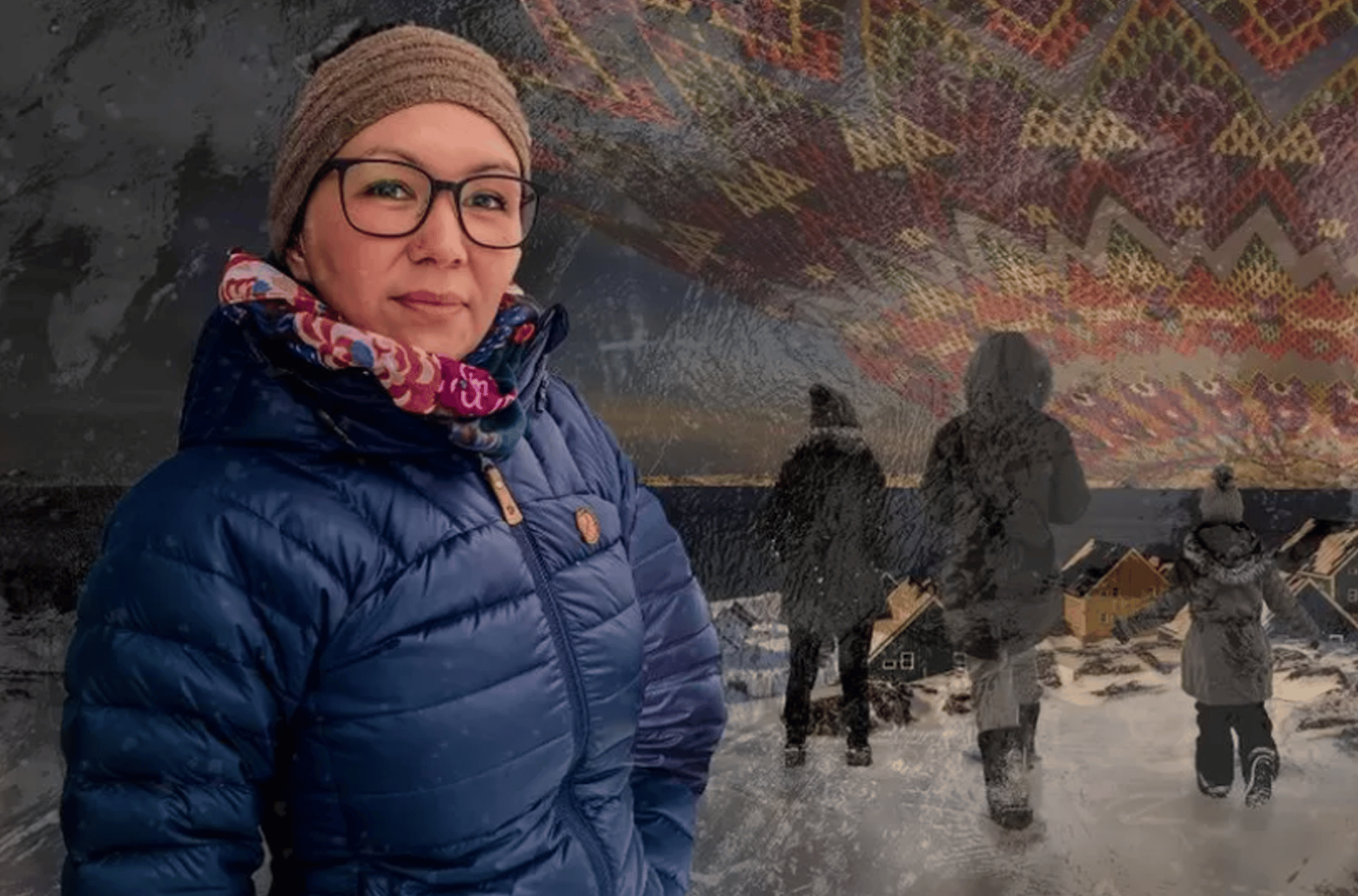
Thousands of women in Greenland, including some as young as 12, had an IUD placed in their wombs − often without their consent − as part of a Danish campaign to control Greenland’s growing Inuit population in the 1960s and 70s. The Danish government has announced an independent investigation into this so-called “Coil Campaign”. But the BBC has gathered accounts from women about more recent involuntary provision of contraception, amid growing calls for the investigation to go further.
When Bebiane (photo above) was 21 years old, she went to have a coil fitted − only to learn she already had one. She believes the only time it could have been inserted without her knowing was when she had an abortion at the age of 16, in the early 2000s. For the next four years she suffered from crippling spells of abdominal pain so severe that they left her unable to climb stairs. “I went to the hospital so many times and they didn’t know what was wrong with me.” She wanted to get pregnant, but had still not conceived after more than a year. She decided to take a break from trying for a few months, and to get a coil fitted, as friends had advised her − wrongly − that this would boost her fertility. This was when she discovered that she had a coil already. She had it taken out, abandoned plans for a new one, and fell pregnant within months.
In 2019, another woman discovered she had a coil when a doctor found it during a medical examination. She too was shocked. The only time it could have been inserted without her knowledge was during minor uterine surgery in 2018. She suffered intense pain for a year afterwards. She says this was continuously dismissed by her doctor until a thorough check-up revealed the coil, which had perforated her uterus. Exhausted by medical complications, she opted to have a hysterectomy. But the operation was not a success − she can no longer have sex because every time she does so, it leads to bleeding and excruciating pain.
Other contraceptive devices have been inserted in some Inuit women without their knowledge. One woman woke up from an abortion in 2011 with a contraceptive implant in her arm. She said the doctor told her it was because this was her fourth abortion. “I felt violated,” she said. She demanded to have it removed, but only when she began pulling off the bandage, threatening to take the implant out herself, did the doctor agree to remove it.
Another woman, age 28, says in 2014 she had been put under a general anaesthetic for a procedure following a miscarriage, but woke to a Danish nurse injecting her with Depo Provera. “I didn’t know what it was and she didn’t ask me if I wanted it,” she says, “just that I should come back to the hospital to get it every three months.” The nurse didn’t even tell her the name of the injectable. She decided to continue using it for a few years, but when she stopped in order to have a baby, it took several years for her to fall pregnant.
In September this year, Denmark and Greenland agreed to launch a two-year investigation to establish what happened until 1991, when Greenland took control of its health system from Denmark. But the article goes on to tell many more stories, including more recent ones.
The IUD that was often used, the Lippes Loop, had been designed for adults who had already gone through childbirth, but it was inserted into girls as young as 12, causing a great deal of pain. The complications that arose in girls and young women ranged from severe bleeding, to infection, persistent pain and infertility.
As recently as the mid-1990s, one doctor found IUDs in patients who were being assessed for infertility, some of whom had tried to become pregnant for 10-15 years.
One woman began reaching out to others via Facebook and was contacted by some 200 people from all over Greenland with similar stories. She now campaigns for the rights of other women affected by the scandal. But it wasn’t until a Danish podcast about the scandal aired early in 2021 that the sheer scale of the campaign was revealed and led to a national outcry. The podcast (Spiralkampagnen) found records indicating that around 4,500 Greenlandic women and girls were fitted with a Lippes Loop between 1966 and 1970. That was about half of the 9,000 women of fertile age living in the country at the time.
The aim was to control the population growth in Greenland, which had ballooned since the 1950s, aided by modernisation and better healthcare. This growth, in addition to an increasing rate of teenage pregnancies, had alarmed the Danish authorities.
In 1970, the campaign was considered a “success” as fertility rates had fallen sharply, though the rate continued to fall for some time after that. Between 1966 and 1974, Greenland’s fertility rate fell from 7 children per woman to 2.3.
The most shocking case the journalist encountered was a woman now age 75 at interview who, after a routine check-up when she was five months’ pregnant with her second child, was told by the doctor he wanted to abort the baby because of a previous gynaecological complication. Yet the “complication” had been addressed before the pregnancy, and she was in good health. Nevertheless, she says, they went ahead and induced an abortion. This required no less than 31 injections, but the baby did not die. Finally, at seven months, she went into labour and the baby died within an hour of being born. Within hours, she says, there were then four attempts to insert a coil before she finally told the doctor to stop. She says that she used to imagine hearing the baby, a little boy, crying in her house. “My sadness just overcomes me.”
SOURCE: BBC, by Elaine Jung, 9 December 2022



